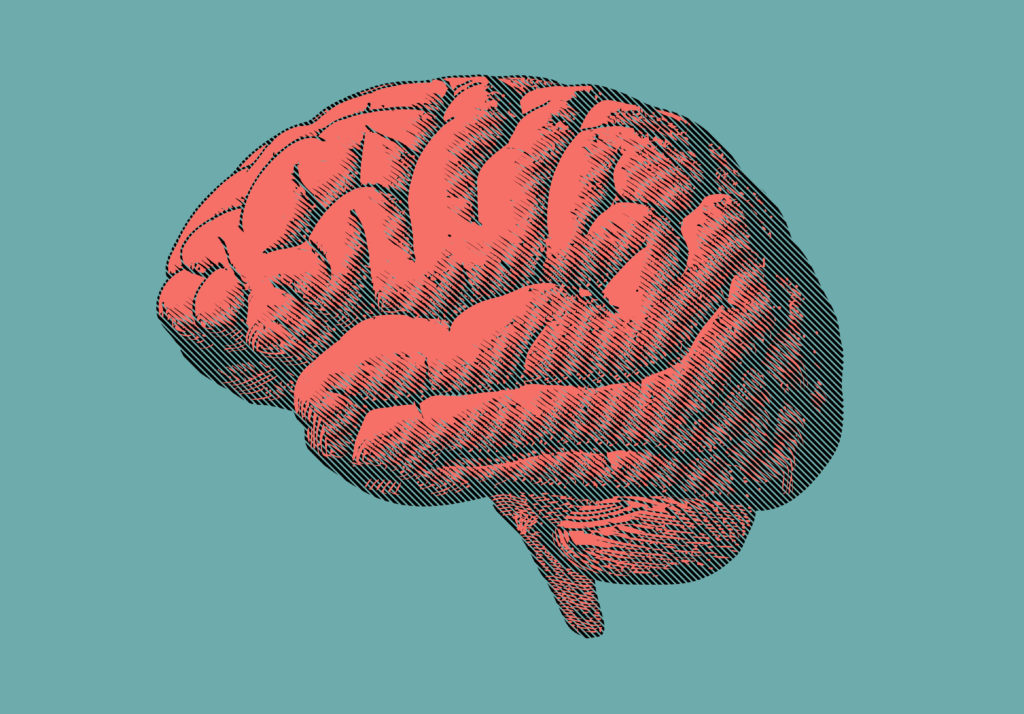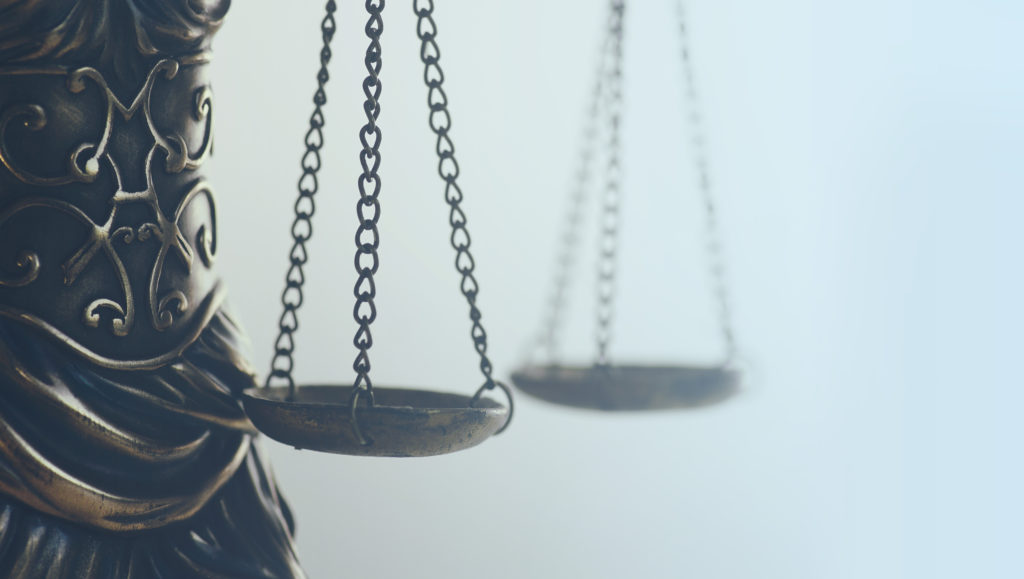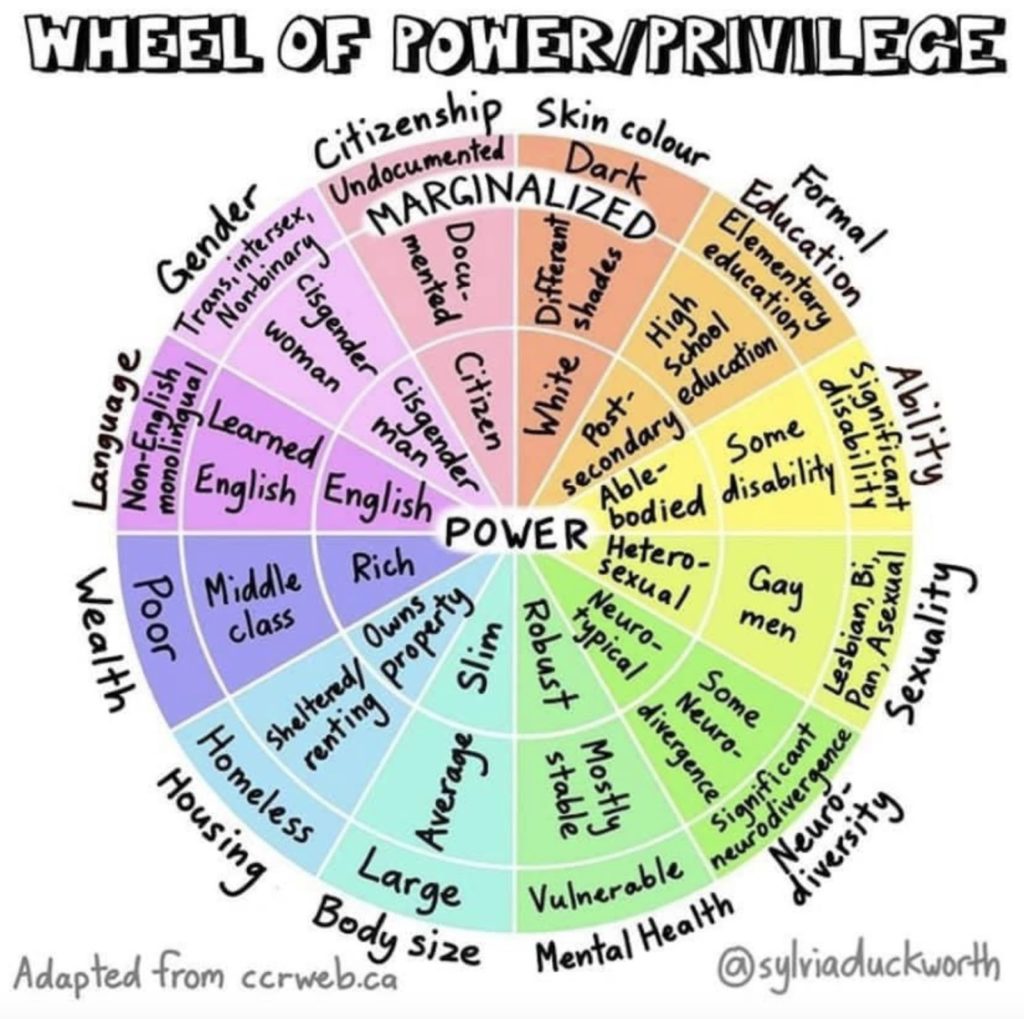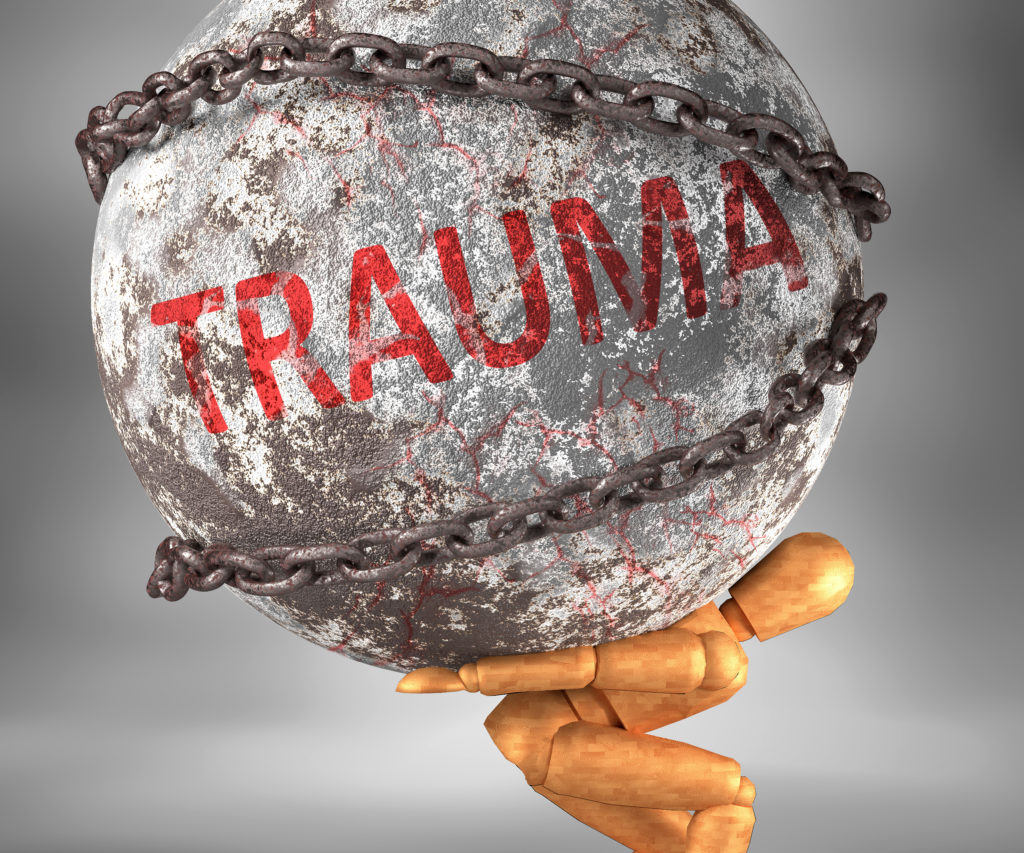Mā te saṅgo ’stvakarmaṇi – May you not have any inclination for inaction
– Bhagavad Gita 2.47
It’s safe to say that any discipline that works on the body and mind is social and political, because our bodies are what society and politics are made of. Yoga is one of these disciplines.
Bo Forbes, in her article “Why Yoga and the Body are Social and Political,” explains that in Western society, we tend to give more importance to the brain and the mind over the body. But feelings and emotions come from our physical body. Receptors on our skin and organs collect data — like your heart rate or the pace and depth of the breath — and send it to the brain. Then, the Anterior Cingulate Cortex (ACC) and the Frontal Insula (FI) transform these bodily sensations into complex, social emotions.

While the ACC might be more related to our ability to perceive signals originating from within the body, the FI seems to be more involved in generating our social emotions, such as empathy, trust, guilt, embarrassment, and love.
The Anterior Cingulate Cortex and Frontal Insula are also the only areas where spindle-shaped neurons, called Von Economo neurons, are located. Von Economo neurons have unusually large cells. Large cells typically correlate with faster speed. These neurons allow for quick communication between the ACC, FI, and the rest of the brain. Neuroscientist John Allman, who studies Von Economo neurons in-depth, speculates that the neurons “would enable one to quickly adjust to changing social contexts.”
In the words of Bo Forbes, “Our mind is not the only node of transformation. Training our body can change our mind, brain, and society.” Practicing yoga physically, mentally, and spiritually can help us become more sensitive to the changes in the world around us. Being more sensitive to the changes, nuances, and complexities around us is a crucial part of being better listeners, being more empathetic and equanimous, and being more invested in justice.
An Example: The Prison Yoga Project
A practical example of the transformational aspect of yoga is James Fox’s Prison Yoga Project. The PYP began in 2002 with the goal of bringing trauma-informed yoga and mindfulness to prisoners. The project argues that restorative justice, rather than a punitive approach, can reduce the crime level in a community.
Restorative justice suggests that crime affects perpetrators, victims, and communities. Restorative justice “seeks to repair harm by providing an opportunity for those harmed and those who take responsibility for the harm to communicate about and address their needs in the aftermath of a crime.” Restorative Justice recognizes that criminal behavior is often the consequence of unresolved trauma.
The Prison Yoga Project “supports prisoners to face and release unresolved trauma in a safe and effective way. [They] provide resources and tools for recognizing and reducing aggression, impulsivity, reactivity, and despair.” The way prisoners learn how to act and react in a more mindful manner is proof that yoga can change us so deeply that the community around us also changes.
Being Mindful of Movement
Bo Forbes analyzes another aspect of why our bodies are social and political, mentioning Ta-Nehisi Coates’ idea of “forced disembodiment.” This is a tool that dominant culture routinely uses to maintain power over other groups of people. Think of abortion rights, sexual harassment and violence, and police brutality. People of color need to control how they speak and move to appear less threatening because of this. Women can’t freely dress and walk everywhere or leave their drinks unattended. “They are examples of how proprioception, our sense of our movements and the way we occupy our personal space and the peripersonal space around us, is affected by our social and political world.”

Proprioception, also called kinesthesia, is particularly important in yoga practice. Consider the balancing poses, coordinated movements, strength control, and the general awareness of our body. This confirms, once again, how practicing Yoga can have a significant impact on our sensitization and social lives.
Ahimsa: Yoga and Non-Violence
Another key aspect that ties yoga and social justice together is the concept of Ahimsa.
Practicing yoga is not only about physical movements. To experience its effects across all aspects of your life, you should follow all eight limbs of Yoga:
Yamas, Niyamas, Asanas, Pranayama, Pratyahara, Dharana, Dhyana, and Samadhi.
Ahimsa, or non-violence, is the first of the Yamas. It is the foundation of the practice, and everything else we do is precarious if not built on the ground of non-violence. Ahimsa is derived from the Sanskrit word himsa, meaning to cause pain, and the prefix a-, which means not. Not causing pain certainly means not doing physical harm directly, but it also means not turning our faces away when we witness harm done to someone else.
Practicing Ahimsa requires the courage to overcome our fears. It requires balance in our life, as that balance will create “harmony within us, and harmony within naturally expresses itself in external action that are harmonious.”
I am no longer accepting the things I cannot change. I am changing the things I cannot accept
Angela Davis
We also need to avoid putting ourselves in positions of superiority — what would be called white saviorism in anti-racism work. We are not here to fix other people. No one needs to be fixed. We can’t know what is best for others.
Another characteristic of Ahimsa is compassion. The word compassion comes from the Latin compati, to suffer with. “We learn compassion as we dissolve our personal version of the world, and grow gentle eyes that are not afraid to see reality as it is. We learn compassion as we stop living in our heads, where we can neatly arrange things, and ground ourselves in our bodies, where things might not be so neat.”
Doing What’s Right
Finally, I want to briefly touch the concept of Dharma. The word Dharma (धर्म) contains the root dhru (धृ), which means to hold or to support. Dharma is what sustains people. There is not one single word to translate Dharma. We can use “law,” “order,” or “duty,” depending on the context.

It is related to correct, appropriate, and morally upright conduct and is associated with the Yamas. The antonym is Adharma, literally “not Dharma.” “In common parlance, adharma means that which is against nature, immoral, unethical, wrong or unlawful”.
Dharma deeply connects to yoga. Practicing yoga calls us to follow our dharma and do what is right and ethical in life.
In Deborah Adele’s words, “Whatever we find ourselves engaged in, this jewel of Ahimsa, or not violence, asks us to step lightly, do no harm, and to honor the relationship we have with the earth, with each other, and with ourselves.”
Everything is connected, and everyone is connected.
How to Create a More Just World Through Yoga
This now-famous picture shows in how many ways people can be marginalized. The picture itself is incomplete (religion for example is missing) and in continuous development.
As social justice allies, we first need to know where we are in the wheel of power and privilege. We might be in a position of power in some areas, and in a more marginalized position for other areas. Where we have power, we can use it to subvert the status quo.

As yoga teachers and practitioners, we have the power to change minds and behaviors. We also have the healing power to support survivors of oppression and the community in moments of collective grief. Yoga is a useful tool to improve trauma, grief, and PTSD. All those who are survivors of violence and traumatic events benefit from the practice of yoga.
How Trauma Works
When you face traumatic events, the Sympathetic Nervous System (SNS) activates the fight, flight, freeze, or appease response. The Enteric Nervous System (ENS) also activates when facing environmental threats. This is usually what we call “gut feelings.”
The hypothalamus activates the glands that produce stress hormones. The whole body becomes tense. When the traumatic event is over, a healthy response would be for the Parasympathetic Nervous System (PNS) to start working and bring down all stress levels in the body. However, this sometimes never happens, and your body stays in that state of tension for longer stretches of time.
The stress hormones keep circulating in the body. You live in a continuous state of fear and anxiety, like the traumatic event is happening over and over again. You might feel like your body betrayed you, since you weren’t able to save yourself from the harm.
When you live with trauma and PTSD, you need to regain trust in your body and help the PNS to bring down tension. Several studies show how yoga, especially a trauma-informed style, helps with both these goals.

For example, the Vagus Nerve, which is part of the PNS, brings information from the inner organs to the brain. Since the Vagus Nerve passes through the diaphragm and the throat, it regulates our brains and the PNS through the breath (pranayama) and chanting of mantras.
Particularly interesting when talking about trauma and historically marginalized groups is Resmaa Menakem’s book, “My Grandmother’s Hands”. He has concentrated his work, particularly on BIPOC populations, and he highlights how not only BIPOC populations live with embodied trauma. He also theorizes that perpetrators, such as white people or the police, have a form of racism that is so embedded in their bodies that they too need to work and heal the body in order to overcome their racist beliefs. Note that the Prison Yoga Project also offers yoga to the officers that work in the justice system.
Intergenerational Trauma
Menakem also talks about intergenerational trauma, “All […] types of trauma are routinely passed on from person to person and from generation to generation.” He suggests that intergenerational trauma is passed down through several “soul wounds,” including:
- Abusive family situations
- Abusive institutions or systems
- Genetics. Menakem writes that “Recent work in human genetics suggests that trauma is passed on in our DNA expression through the biochemistry of the human egg, sperm, and womb.”
Black Americans today still experience the trauma of their ancestors who were forced to leave their motherland and work as slaves.
Intergenerational trauma can be applied to all populations that have survived war and genocide.
There are many studies that demonstrate how the effects of trauma can be passed on for generations to come. There are studies on the children of Holocaust survivors, children of Civil War soldiers who spent time as prisoners of war, and children of women pregnant during the Dutch Hunger Winter. All showed modification in behavior and in patterns of RNA.
In another study, participants filled out the Adverse Childhood Experience (ACE) questionnaire. The higher the ACE score, the more likely they were to have altered sncRNA (small non-coding RNA).
I also like the words of Sonya Renee Taylor that we need an act of Radical Self-Love. Not only self-esteem and self-confidence. They are not enough anymore. Sonya Renee Taylor also uses the expression Body Terrorism. This reaffirms how the body is deeply linked with social and political systems. Taylor wrote, “Describing body terrorism as a systemic and structural issue underscores how our political, economic, and social systems uphold the marginalization of bodies based in race, gender, age, size, ability, sexual orientation, and a variety of other markers.”
In conclusion, yoga practitioners and yoga teachers have a powerful means to change, possibly for the better, our minds, behaviors, and communities. We have the power and the great responsibility to create and keep yoga spaces inclusive places of liberation.
Everything is connected, and everyone is connected.
Sources
“2nd Edition: The Body Is Not an Apology: The Power of Radical Self-Love.” Sonya Renee Taylor, www.sonyareneetaylor.com/books/the-body-is-not-an-apology-the-power-of-radical-self-love-h2x6p. Accessed 29 June 2022.
Allman, J. M., et al. “The Anterior Cingulate Cortex. The Evolution of an Interface between Emotion and Cognition.” Annals of the New York Academy of Sciences, vol. 935, 1 May 2001, pp. 107–117, pubmed.ncbi.nlm.nih.gov/11411161/.
Allman, John M., et al. “The von Economo Neurons in Fronto-Insular and Anterior Cingulate Cortex.” Annals of the New York Academy of Sciences, vol. 1225, 1 Apr. 2011, pp. 59–71, www.ncbi.nlm.nih.gov/pmc/articles/PMC3140770/, 10.1111/j.1749-6632.2011.06011.x.
Coates, Ta-Nehisi. “Ta-Nehisi Coates.” Ta-Nehisi Coates, 21 Oct. 2018, ta-nehisicoates.com/books/between-the-world-and-me/.
Curry, Andrew. “Parents’ Emotional Trauma May Change Their Children’s Biology. Studies in Mice Show How.” Www.science.org, 18 July 2019, www.science.org/content/article/parents-emotional-trauma-may-change-their-children-s-biology-studies-mice-show-how.
Farb, Norman, et al. “Interoception, Contemplative Practice, and Health.” Frontiers in Psychology, vol. 6, 9 June 2015, www.ncbi.nlm.nih.gov/pmc/articles/PMC4460802/, 10.3389/fpsyg.2015.00763.
Gregor, Hasler, et al. Vagus Nerve as Modulator of the Brain–Gut Axis in Psychiatric and Inflammatory Disorders. Frontiers in Psychiatry, 2018, www.frontiersin.org/article/10.3389/fpsyt.2018.00044.
Harvard Health Publishing. “Understanding the Stress Response.” Harvard Health, Harvard Health, 6 July 2020, www.health.harvard.edu/staying-healthy/understanding-the-stress-response.
Magazine, Smithsonian. “Brain Cells for Socializing.” Smithsonian Magazine, www.smithsonianmag.com/science-nature/brain-cells-for-socializing-133855450/.
“My Grandmother’s Hands Trade Paperback.” Central Recovery Press, 20 Sept. 2018, centralrecoverypress.com/product/my-grandmothers-hands-racialized-trauma-and-the-pathway-to-mending-our-hearts-and-bodies-paperback.
Neurohemodynamic Correlates of “OM” Chanting: A Pilot Functional Magnetic Resonance Imaging Study. 2011, www.ijoy.org.in/citation.asp?issn=0973-6131;year=2011;volume=4;issue=1;spage=3;epage=6;aulast=Kalyani;aid=IntJYoga_2011_4_1_3_78171.
“Overcoming Trauma through Yoga by David Emerson, Elizabeth Hopper, Ph.D.: 9781556439698 | PenguinRandomHouse.com: Books.” PenguinRandomhouse.com, www.penguinrandomhouse.com/books/206348/overcoming-trauma-through-yoga-by-david-emerson-and-elizabeth-hopper-phd/. Accessed 29 June 2022.
“Prison Yoga Project.” Prison Yoga Project, 2010, prisonyoga.org/.
“Restorative Justice.” Justice.gc.ca, 2018, www.justice.gc.ca/eng/cj-jp/rj-jr/index.html.
“The Yamas & Niyamas: Exploring Yoga’s Ethical Practice.” Theyamasandniyamas.com, theyamasandniyamas.com/t. Accessed 29 June 2022.
“Why Yoga + the Body Are Social and Political – BO FORBES.” Boforbes.com, boforbes.com/blog/we-need-to-talk-why-yoga-and-mindfulness-and-wellness-and-spirituality-and-personal-growth-are-social-and-political/. Accessed 29 June 2022.
